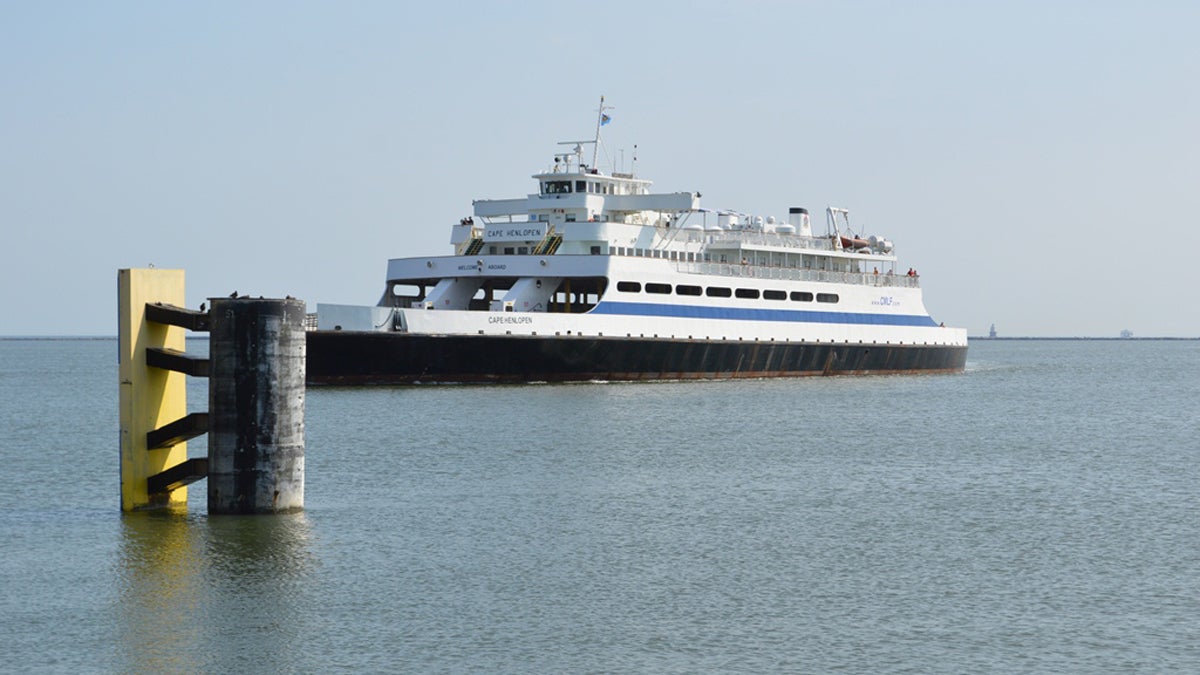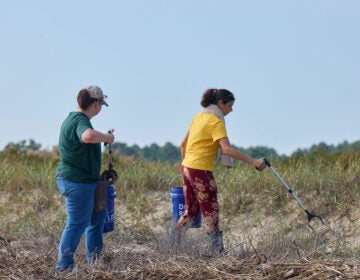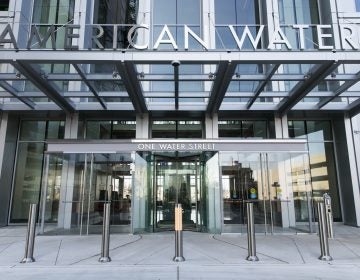Ferry link means big business for beach towns in Delaware and New Jersey
New study shows the multi-million dollar impact the Cape May/Lewes Ferry has on the local economy — an impact beach businesses hope ramps up post-pandemic.

The Cape May-Lewes Ferry (Elisabeth Perez-Luna/WHYY)
Since 1964, the Cape May/Lewes Ferry has linked Delaware’s beaches to the Jersey shore. The ferry effectively fills in the 17-mile gap across the Delaware Bay, helping travelers with cars and those on foot save time and connecting them — and their spending money — with businesses on either side.
The initial purpose of the ferry was simply to save drivers the trip all the way up and around the Delmarva Peninsula. To get to Cape May from Lewes by car is a three-hour journey covering 169 miles.
And while it still serves that transportation function, the ferry has also become a tourist destination of its own.
“It’s not just a way to get from point A to B,” said Heath Gehrke, director of ferry operations. “[It’s] the value of sitting out on deck and having the breeze blow through your hair. We’ve had multiple dolphin and whale sightings this past week. There’s a lot of interesting ship traffic to see on the bay, catch some rays, have a cocktail.”
It’s an attraction that has an economic spillover effect for local businesses. More than 95% of passengers say they’ll spend money somewhere before or after their ferry trip.
“Those same people are staying in hotels, eating in restaurants and yeah, absolutely, they’re spending those dollars in our local economy,” Gehrke said. “Ferry fare is a small piece of what they’re spending in the local economy.
That spending money rains a bit more on Jersey shore towns compared to their counterparts across the bay.
A study commissioned by the Delaware River and Bay Authority which operates the ferry found passengers spend $144 million annually at businesses in towns between Cape May and Atlantic City. The annual impact on the smaller territory of Delaware beaches is about $125 million.
“The economic effects are even more remarkable when you take into consideration that the Cape May-Lewes Ferry operates without any taxpayer support,” said DRBA executive director Tom Cook. “All ferry operations are funded through ticket sales, concessions, and investments made by the authority.”
The study examined 2018 numbers and found the ferry generated nearly $20 million in revenue compared to about $40 million in operating expenses. The shortfall is made up via tolls charged to drivers crossing the Delaware Memorial Bridge connecting New Castle, Del. to Salem, N.J. some 80 miles to the north.
Those tolls help cover not only ferry operations, but also activity at five airports in the two states, a business park and other economic development projects managed by DRBA.
The economic report is titled “The Power of Twenty” in recognition of its finding that every dollar invested in the ferry’s operation helps fuel $20 of economic activity in Delaware’s Sussex County and Cape May County in New Jersey.
The next phase of the study will explore the impact the ferry has on coastal property values and the value of reduced congestion the ferry provides.
Almost back to normal
Memorial Day weekend travelers will find ferry operations mostly back to normal.
Ferry operations were cut back to two crossings per day in March 2020, with service only available for those in vehicles. Those drivers were required to stay inside their cars or trucks throughout the 85-minute journey.
In April last year, ferry traffic was down nearly 90% with maybe 8 or 10 cars on-board for each trip. A full capacity trip is about 100 vehicles. On average, more than 275,000 vehicles travel on the ferry every year.
“It’s probably, in the history of the ferry, one of the most unusual years,” Gehrke said. “I think all in all, throughout the year, we ended up with about 50% of our normal traffic.”
By July, foot passengers were allowed back on board, but as COVID numbers climbed in December, walk-ons were again forbidden.
Because traffic crossing the Delaware Memorial Bridge was also sharply curtailed as travelers followed stay-at-home orders, the toll revenue that supports ferry operations plummeted too.
“Nobody was moving around, we were all on lockdown for a while and that really was sort of grim for a while,” Gehrke said.
But with the number of vaccinated Delawareans rising and a decline in COVID cases, ferry traffic is close to back to normal. They’re running at about 80% capacity just as a precaution, but Gehrke hopes to add departures later this summer as conditions continue to improve.
Other restrictions still in place include mandatory mask wearing on board, due to Coast Guard regulations. Ferry trips also require reservations, walk-up trips aren’t allowed. Passengers on foot or on bicycle are once again welcome and onboard dining options have returned.
—
As part of the ferry’s 50th anniversary in 2014, WHYY produced an hour-long documentary looking back at that history. You can watch that here: https://video.kpbs.org/video/whyy-specials-preview-billion-mile-journey-cape-may-lewes-ferry/.

Get daily updates from WHYY News!
WHYY is your source for fact-based, in-depth journalism and information. As a nonprofit organization, we rely on financial support from readers like you. Please give today.







